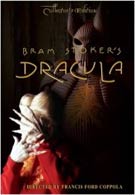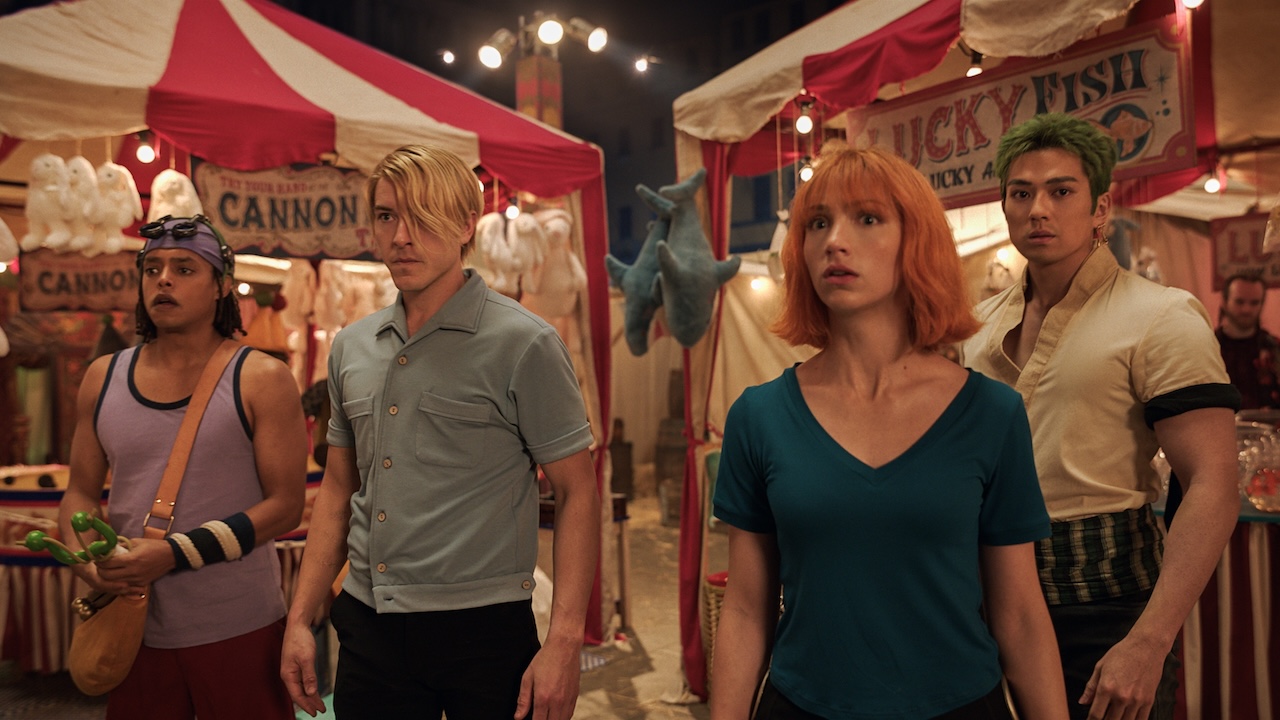Bram Stoker's Dracula, flawed though it may be, still gets my vote as one of the top ten films of the 1990s. Back in 1992, my friends and I were simply obsessed with it, rushing back to the multiplex over 10 times to get another fix of our cinematic narcotic. It’s a journey through a museum of film style and technique propelled by a comparatively faithful adaptation of the Stoker novel (especially when compared to the minor changes wrought by Billy the Kid Versus Dracula). But the content is nothing compared to the style. After an entire decade of rather quaint and well behaved films committed to a more mundane realism, here was this crazy funhouse of wild theatricality and explosive, baroque imagery. The lost art of the silent cinema, buried under years of talky, actor-driven dramas was suddenly alive again, its magical secrets resurrected for a whole new generation by director Francis Ford Coppola. Fighting against pop culture expectations and a century of vampire cliché, Coppola’s approach is unique. Like it or not, no one had ever seen a “Dracula“ quite like this. You know the story of Dracula. If you don’t, then this movie will have an extra bit of excitement as something old will seem just like new. Basically, there’s this blood-drinking Count (Gary Oldman) who lives in a castle high up in the mountains of Transylvania with a trio of vampire hookers who feed on infants from the villages below. Since things are getting very boring at Castle Dracula these days, the old Count decides to move to the swinging London of 1897 in order to regain his youth. An ambitious young Law clerk named Jonathan Harker (Keanu Reeves) is sent to close the real estate deal that includes the transport of about 50 boxes of earth, shaped like coffins. Watch out Londoners.
The high concept brought by screenwriter James V. Hart (Hook) was to base the Count definitively on the historical Vlad the Impaler and to add a romantic angle through the theme of lost love. It seems that Dracula lost his one true love, Elisabeta, and now centuries later he discovers her reincarnated in the body of Jonathan Harker’s fiancée’, Mina Murray (Winona Ryder), giving Dracula one more reason to toss the puny Englishman to his vampire concubine as table scraps.
It’s really an odd story that seems very concerned with real estate contracts and travel as much as the undead. Yet, it’s lasted for over a century and hundreds of adaptations to the movies, TV, and theater. What Coppola does is to think way out of the box and try to come up with a whole new way to look at this penny dreadful material. With its huge impact on popular culture that even includes a breakfast cereal (Count Chockula?), Dracula comes with a truckload of pre-conceptions. Coppola simply digs deeper into the material and finds inspiration in decadent and symbolist art and the historical Vlad Dracula himself to challenge those pre-conceptions. The result replaces familiar images with something more uncanny.
As he has done throughout his career, Coppola hires some of the best artisans in the world, from costume designer Eiko Ishioka (who won an Oscar for her work on this film) to Polish composer Wojiech Kilar. Then Coppola just lets them create. Kilar’s score is one of the film’s best assets, driving the narrative with a haunting, romantic undertone that anchors this film whenever it‘s about to fly off into camp.
The cast is something else entirely, a kind of potpourri of styles and experiences that are easily the film’s weakest link. Performances range from brilliant to abysmal. Gary Oldman gives a Brando level performance as the many faces of Dracula and never, ever allows the elaborate makeup or costumes to inhibit his acting. He is wildly theatrical in a way few actors can even comprehend but without ever going over the top or losing the emotional thread of the character. Anthony Hopkins loses control about two thirds into the film (somewhere around the time he begins quoting Othello and humping Bill Campbell’s leg) and he seems unable to shake off Hannibal Lector altogether, still sniffing at people in a a creepy “Uncle Bob is just tickling you” kind of way. The younger cast is variable with Winona Ryder sliding up and down the scale from inspired to affected. Keanu Reeves is best not even discussed as his performance here would be embarrassing in a community theater production. Some of his line readings are amazingly hilarious such as “I was impotent with fear.” Cary Elwes makes no impression at all but Richard E. Grant has a whole other weirdo movie about Dr. Seward in his crazy mind. You have to look closely but while the other vampire killers have brought crosses, axes and guns, Grant is seen holding some kind of smoking potion in a test tube. A great moment. I’m sure Dracula is really worried about the contents of his test tube. The wild cards in the cast are Tom Waits who is fantastic as the insect eating Renfield and Sadie Frost who brings a real carnal sexuality to the movie.
The movie’s greatness is not in the performances or in the storytelling, however. This is sheer filmmaking itself. Coppola and his visual effects team, led by his son Roman, utilize every trick in the old cinematic testament to create vast illusions onscreen. Since these were old when Coppola used them in 1992, they have not dated at all today. The movie’s great sense of early film magic is intact and will be forever. If there was ever a movie begging for a “special edition” release packed with extras, this is it. So, why has it taken so long for a respectable release of this film to reach DVD? The original Sony DVD from 1997 was a bare bones disc and the Superbit follow-up was the same. All for a film that clearly had many deleted shots and scenes and tons of behind the scenes footage. The original trailer and various stills from the companion book “Bram Stoker’s Dracula: The Film and the Legend” depicted scenes such as Jonathan Harker attempting to kill Dracula with a shovel that were cut out of the film. It is rumored that at one point Coppola had 38 different cuts circulating, each with a slightly different approach before settling on the final version in which the multiple narrations are held together by the voiceover by Anthony Hopkins. At the time of the theatrical release, I remembered seeing promotional footage of the cast rehearsing at Coppola’s home in Napa Valley and of Coppola and crew in the studio working hard to pull off one of the film’s many elaborate in-camera effects. The recent two disc edition of Apocalypse Now was even more proof that Coppola had a Nixonian penchant for recording everything, chronicling the entire process of each film from the ground up. So, where was all of this stuff and why haven’t we seen it after more than a decade? Who knows but here it finally is, anyway.
The original theatrical version of the film is on the first DVD and is available in two versions, Standard or High Definition. The transfer is far better than the earlier releases and looks exactly the way I remember the film in its release. There is a single extra feature on this disc, which is to Watch Bram Stoker’s Dracula with Francis Ford Coppola. It’s a short video introduction followed by another great Coppola commentary that is particularly effective because so many years have past since its production. Bram Stoker’s Dracula provided the director with a way to pay off the massive debts he had built up following the closing of his Zoetrope Studios and the failure of One from the Heart. He is remarkably frank about the film being a work for hire, his troubles with the studio, and his own methods which he questions. There is some real wisdom here from a filmmaker who knows the traps of both the business and the art very well.
Your Daily Blend of Entertainment News
The second disc is the motherlode for fans of this film. It’s a vault containing about a half hour of those deleted scenes and four brand new documentaries running over 70 minutes in total. These cover the entire film in detail from the casting and rehearsal period to Eiko Ishioka’s costumes and, of course, the visual effects. The documentaries are constructed from the seemingly endless behind the scenes footage shot by Zoetrope honcho Kim Aubry back in ‘92 and new interviews with some of the cast and crew today.
The deleted scenes are very interesting from a filmmaking point of view. Most are extended or alternate versions of scenes already in the final cut. In fact, some of the shots are used in the final version without their original context, to create or punctuate other scenes. Most of the scenes cut involve performances that are much too wordy and/or stiffly performed. It’s interesting to see how Coppola and his editors trimmed those scenes to the one or two key lines that make it into the film.
The only downside to all this material is that it makes you wish there was more. But without a doubt this will be the definitive DVD version of Bram Stoker’s Dracula for some years to come.

